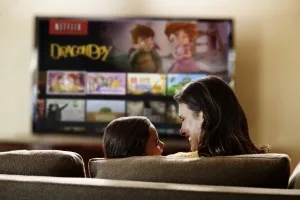As reported by Digital TV News, a presentation by Jack Wetherill, Futuresource senior market analyst, at the New Content Horizons event in London, showed that smart TV led as the most popular device for watching SVOD content in each of the six markets it had analysed. The percentage of Netflix users watching on smart TVs in the six countries, was Spain at 49%, Italy at 42%, the UK at 35%, Germany at 32%, the US at 30% and France at 28%.
Streaming media devices like Google Chromecast were the second-highest favoured option for accessing Netflix in four of the six countries, with PC or laptop viewing proving second most popular in Spain and Italy. Viewing Netflix via a STB did not rank among the top five viewing methods in any of the six markets, although in France it came in fifth place with 8% of viewers saying they preferred to view SVOD services in this way.
STB ownership in Western Europe climbed by 39% between 2012 and 2016, to have a presence in 111 million households. Smart TV ownership climbed by a larger 163% over the four-year period but only appeared in 79 million homes in the region in 2016, while digital media adaptor ownership grew by 458% to appear in 22 million Western European homes.
Wetherill stated that he expects 20 million STBs, excluding free-to-air boxes, to be shipped in Western Europe this year, which will be a fall of 1% compared to last year. He also expects 19 million smart TVs to be shipped, which will be a rise of 6% compared to last year, and 13 million digital media adapters to be shipped, which is a rise of 16% compared to last year. He is quoted as saying:
“As somebody once described it, and it will no doubt be described again, the set-top box is kind of like the cockroach in a nuclear winter. It will be one of the things that survives this whirlwind of development in content and hardware.”
Watching Netflix on smart TVs grows in popularity
Analyst Comment
The point about the STB is that although having a fixed hardware platform has a lot of cost and causes a number of problems for operators, because of the price pressures on the TV market, an STB will always have the possibility of offering a better experience, at least until the cloud and connectivity is so well developed that a virtual STB is feasible, reliable and low cost. The STB can also be upgraded every several years, more often than a TV will typically be replaced and as I have said a number of times over the years “Your smart TV becomes your stupid TV two years later”. Finally, using an STB allows the operator to really control the full user experience. That’s not possible when the service has to work on any TV that the user might buy. (BR)

